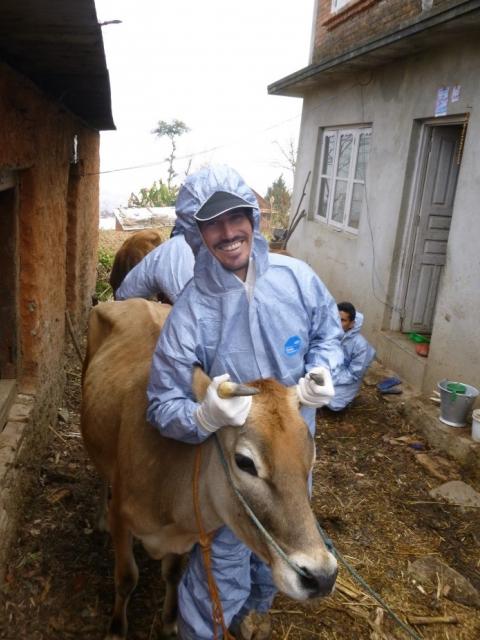Foot-and-mouth disease experience will help protect WA

The importance of biosecurity at all levels and understanding how to respond to signs of foot-and-mouth disease were the key lessons for Broome Cattle Vets director Bryce Mooring from a recent training course in Nepal.
Dr Mooring said the course provided “a first-class education for vets and livestock industry members in every facet of foot-and-mouth disease”.
“Australia currently is foot-and-mouth disease free and it is in our best interests to endeavour to remain this way,” Dr Mooring said.
“Foot-and-mouth disease is a highly contagious, acute viral disease affecting cloven-hooved animals, including pigs, cattle, sheep and goats. This disease has caused disastrous economic and social impacts in countries that have been infected with it.
“One single outbreak of foot-and-mouth disease in Australia has the ability to cripple our livestock industry and close trade with all international markets.
“In order to ensure we are prepared to recognise and respond to foot-and-mouth disease if it occurs in Australia, government and industry fund private and government vets and agricultural industry members to travel to Nepal where the disease is common.
“There we learned how to identify, sample and test for foot-and-mouth disease as well as practising biosecurity protocols to avoid spreading the disease.
“The training was one of the best short courses I have ever attended with the course mentors sharing a wealth of experience,” Dr Mooring said.
“Participants gained a solid theoretical understanding of foot-and-mouth disease, including the DNA structure of the virus, how it replicates and modifies with new infections, the different strains and the epidemiology of the disease.
“We also examined the procedures in place for its control should an outbreak occur in Australia and how it would impact our livestock industry as a whole.
“The course also gave us the opportunity to enter the field under a full quarantine protocol (including protective clothing, clean zone, dirty zones) and to clinically diagnose foot-and-mouth disease in cattle, goats and pigs.
“Our groups worked up cases as we would in Australia: we took samples from infected animals and had them tested at the Kathmandu laboratory to support our diagnosis and used epidemiological tools and case histories to trace back where the infection started and trace forward to where it may have reached.
“Our groups were also able to discuss the disease with Nepalese farmers and provide recommendations for treatment of the disease as well as biosecurity measures to prevent infection.
“In summary, it was an incredible opportunity to see this disease firsthand and it cemented my belief in how important biosecurity is in protecting our Australian industry now and into the future,” Dr Mooring said.
The FMD real-time training program is part of the ‘Australian Government’s Agricultural Competitiveness White Paper, the government’s plan for stronger farmers and a stronger economy’; and is cost shared between the Australian Government, certain state and territory jurisdictions, and industry organisations.
The course was delivered by the European Commission for the Control of Foot-and-Mouth Disease, a Commission of the Food and Agriculture Organization of the United Nations.
You can find out more about how to recognise the signs of foot-and-mouth disease on the DPIRD website or visit the EU site at https://eufmdlearning.works/.
